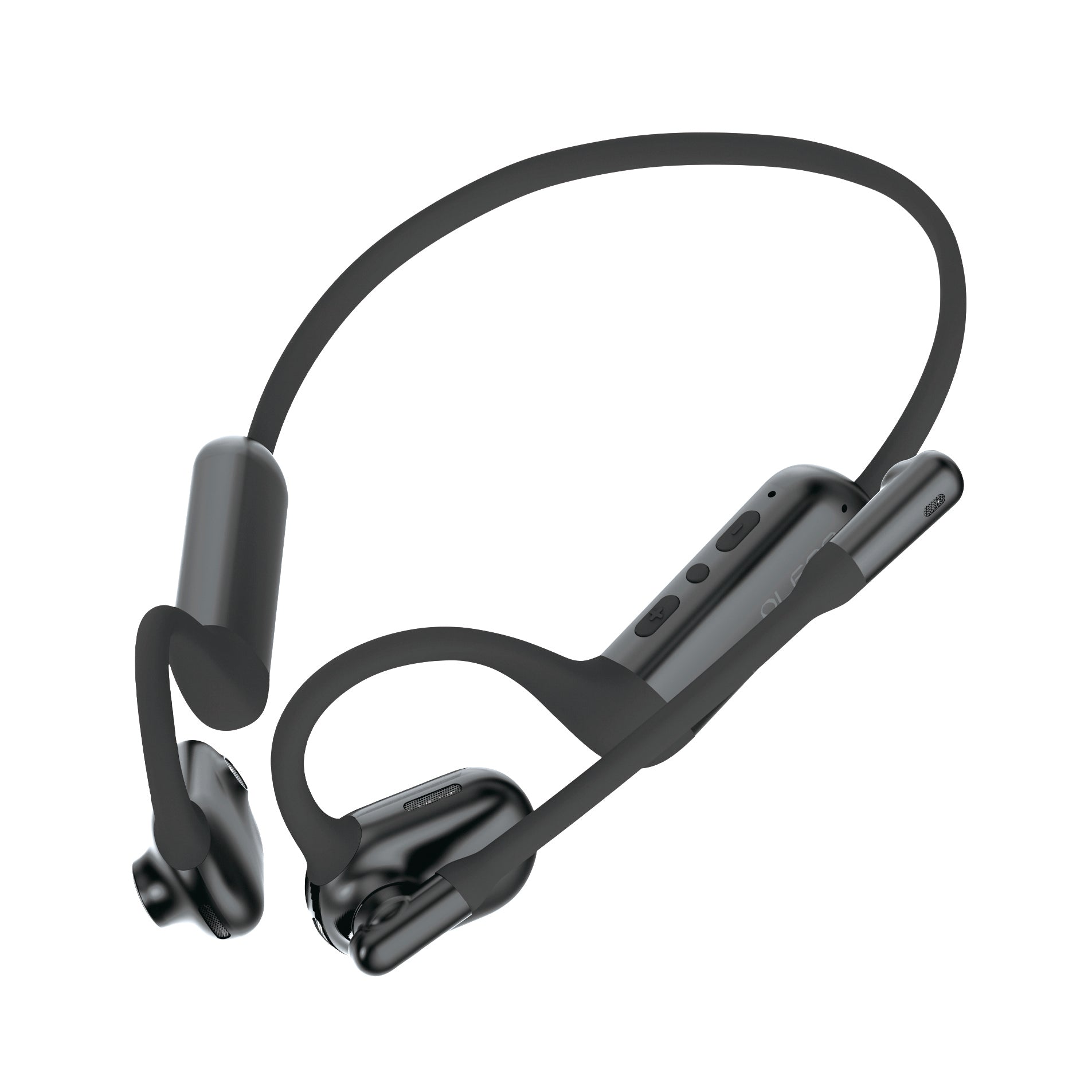The world of headphones is vast, with options for every need and preference. But lately, a new contender has entered the ring: bone conduction headphones. These innovative devices transmit sound through the bones of your skull rather than through the air, as traditional air conduction headphones do.
But are bone conduction headphones all they're cracked up to be? And for whom are they the right choice? Let's break down the difference between air conduction and bone conduction, exploring their pros and cons to help you decide which is right for you.
How Does Each Technology Work?
- Air conduction: This is the classic way we experience sound. Air conduction headphones use drivers to create sound waves that travel through the air, enter your ear canal, and vibrate your eardrum, ultimately being interpreted by your brain as sound.
- How does bone conduction work? This method bypasses the eardrum entirely. Bone conduction headphones send vibrations through the bones in your cheekbones and jaw directly to your inner ear, which then processes those vibrations as sound.
Advantages of Air Conduction Headphones
Let's start with what we know and love. Air conduction headphones offer some distinct benefits:
- Superior Sound Quality: Air conduction generally provides a richer, fuller sound experience, particularly when it comes to bass frequencies. If you're an audiophile who prioritizes sound fidelity, air conduction vs bone conduction for music will usually win out.
- Wide Availability and Affordability: You can find air conduction headphones at virtually every price point, from budget-friendly to high-end audiophile models. There's a vast array of brands and styles to choose from.
- Noise Isolation: Over-ear air conduction headphones, in particular, offer excellent noise isolation, blocking out external distractions. This is ideal for focusing at work, studying, or immersing yourself in your music.
Advantages of Bone Conduction Headphones
Bone conduction headphones may be newer, but they come with their own set of impressive perks:
- Unmatched Situational Awareness: This is where bone conduction truly shines. Because your ear canals remain open, you maintain awareness of your surroundings. This is invaluable for outdoor activities like bone conduction headphones for running, cycling, or even just walking around a busy city.
- Supreme Comfort: No more ear fatigue! The open-ear design of bone conduction headphones vs earbuds means nothing is jammed in your ear canal, making them incredibly comfortable for long-term wear. This is particularly beneficial for people with sensitive ears or those who find traditional headphones uncomfortable.
- A Boon for Some with Hearing Loss: While not a replacement for bone conduction hearing aids, some people with conductive hearing loss – a problem with sound transmission to the inner ear – find that bone conduction headphones can help them hear better. However, it's essential to consult with an audiologist to determine if this is a suitable option for your specific needs.
Weighing the Drawbacks
No technology is perfect, so let's be realistic about the limitations:
Air Conduction:
- Sound Leakage: This can be an issue, especially at higher volumes. Others around you may hear your music, and you won't be respecting noise ordinances in quieter environments.
- Discomfort: Prolonged use of some air conduction models can lead to ear fatigue or discomfort, especially in-ear styles.
Bone Conduction:
- Sound Quality Trade-offs: While constantly improving, bone conduction typically doesn't match the fidelity and bass response of air conduction, especially in noisy environments. Air conduction vs bone conduction for calls may favor air conduction in high-noise areas.
- Sound Leakage: Bone conduction headphones also experience sound leakage, though often less so than open-back air conduction headphones.
Choosing the Right Headphones for You
Ultimately, the best choice depends on your individual needs and priorities:
- For Audiophiles and Noise Isolation: Air conduction headphones, particularly over-ear models, remain the top choice for sound quality and blocking out distractions.
- For Athletes and Outdoor Enthusiasts: The safety and awareness provided by bone conduction headphones are unbeatable for running, cycling, or any activity where staying aware of your surroundings is crucial.
- For Comfort and Convenience: Bone conduction headphones are a game-changer for those seeking all-day comfort and the ability to stay connected to their environment.
- For Specific Hearing Needs: While not a universal solution, bone conduction may be beneficial for certain types of hearing loss. Consult with an audiologist to discuss your individual needs.
No matter your preference, understanding the advantages of bone conduction headphones and air conduction headphones empowers you to make an informed decision and find the perfect pair to elevate your listening experience.






